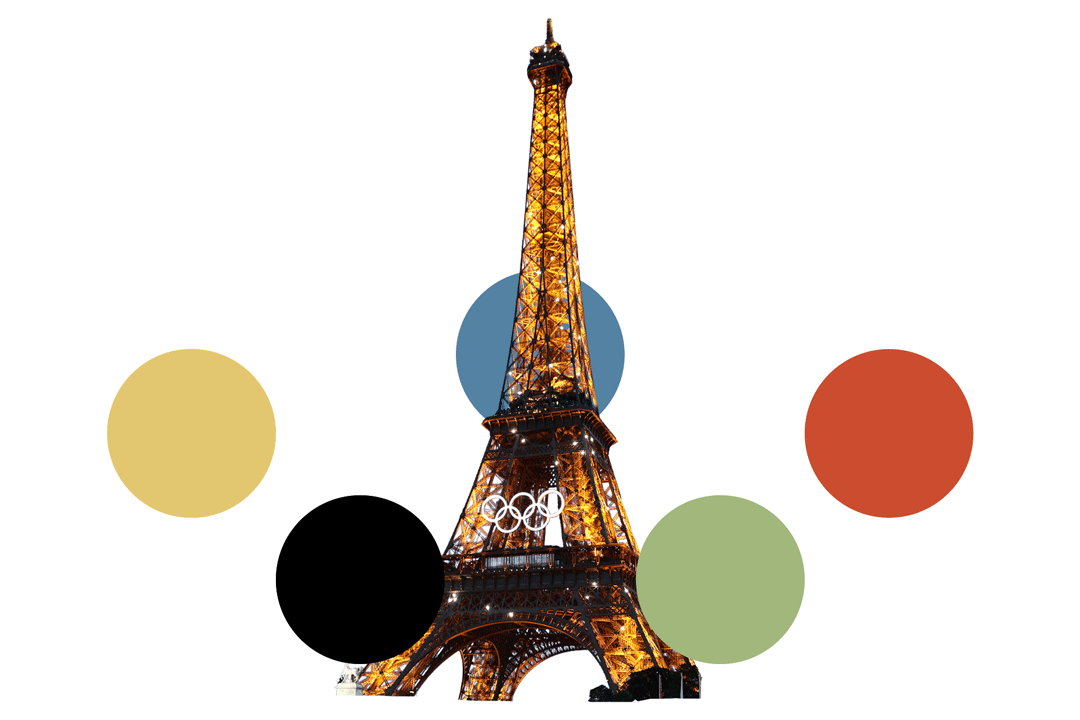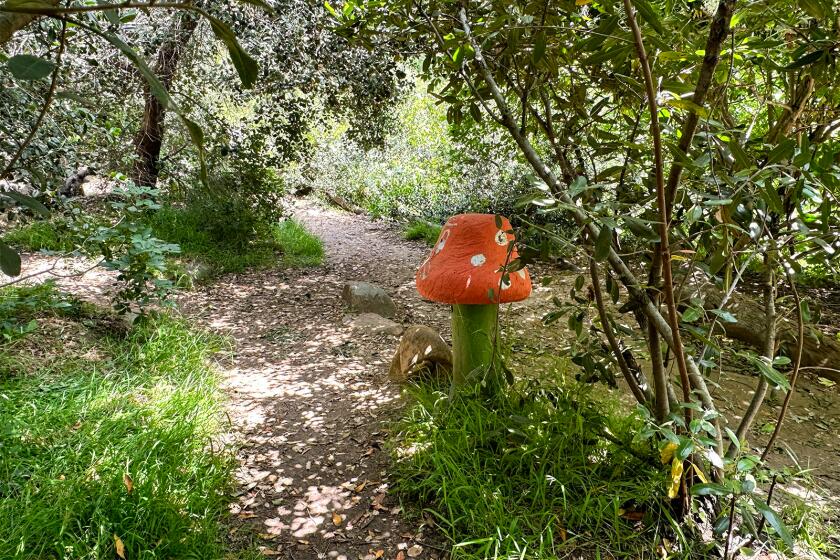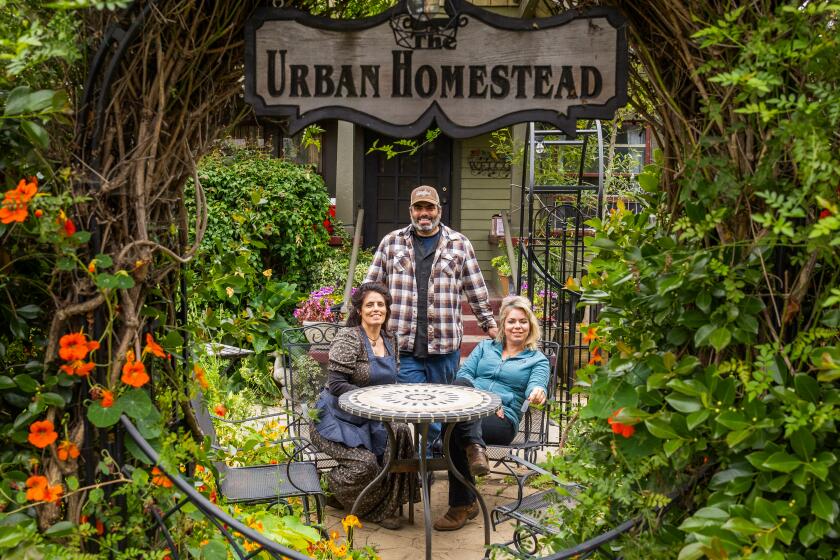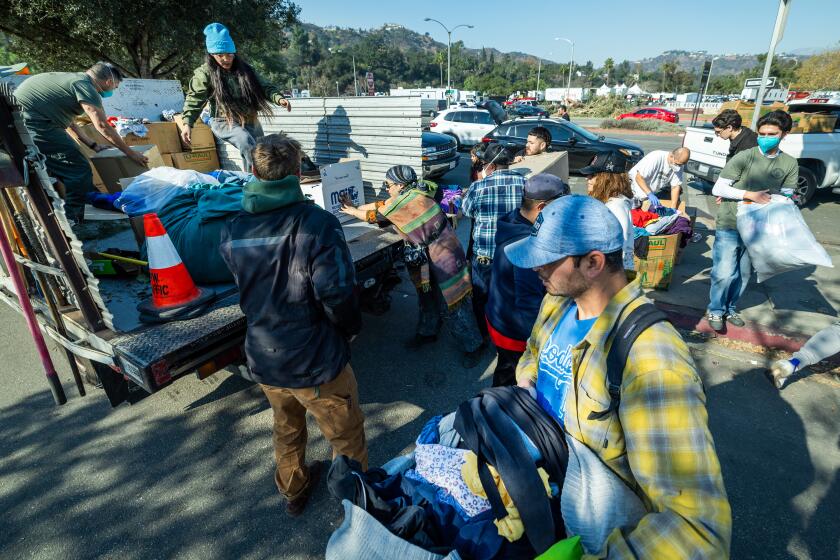
- Share via
If you overlook the polluted Seine, Paris looks so pretty on TV, so quintessentially Parisian, that it raises the question: How will Los Angeles compare when it hosts the 2028 Olympics?
We can rhapsodize about our fabulous mountains and beaches, gorgeous parks and gardens, and many breathtaking residential drives. But that’s not what people see when they first arrive to Los Angeles or what we encounter most days as we go about our business.
Instead, it’s long bleak corridors of concrete and traffic, off-ramps and intersections choked with weeds and trash, blocks of faceless (or defaced) buildings and front yards with boring (or dying) swaths of lawns.
Track and field, basketball, water polo and beach volleyball are among the Paris Olympics events on television Saturday. Here’s the complete TV schedule.
Things are especially grim at the entry point for most visitors — that interminable construction zone known as Los Angeles International Airport, where the main message after leaving the terminal appears to be “Welcome to Hell.”
We can do better, we must do better, not only for our visitors but ourselves. And the 2028 Olympics are a golden opportunity to make some substantial changes that will not only beautify our city but celebrate our unique natural history while supporting our threatened pollinators and wildlife.
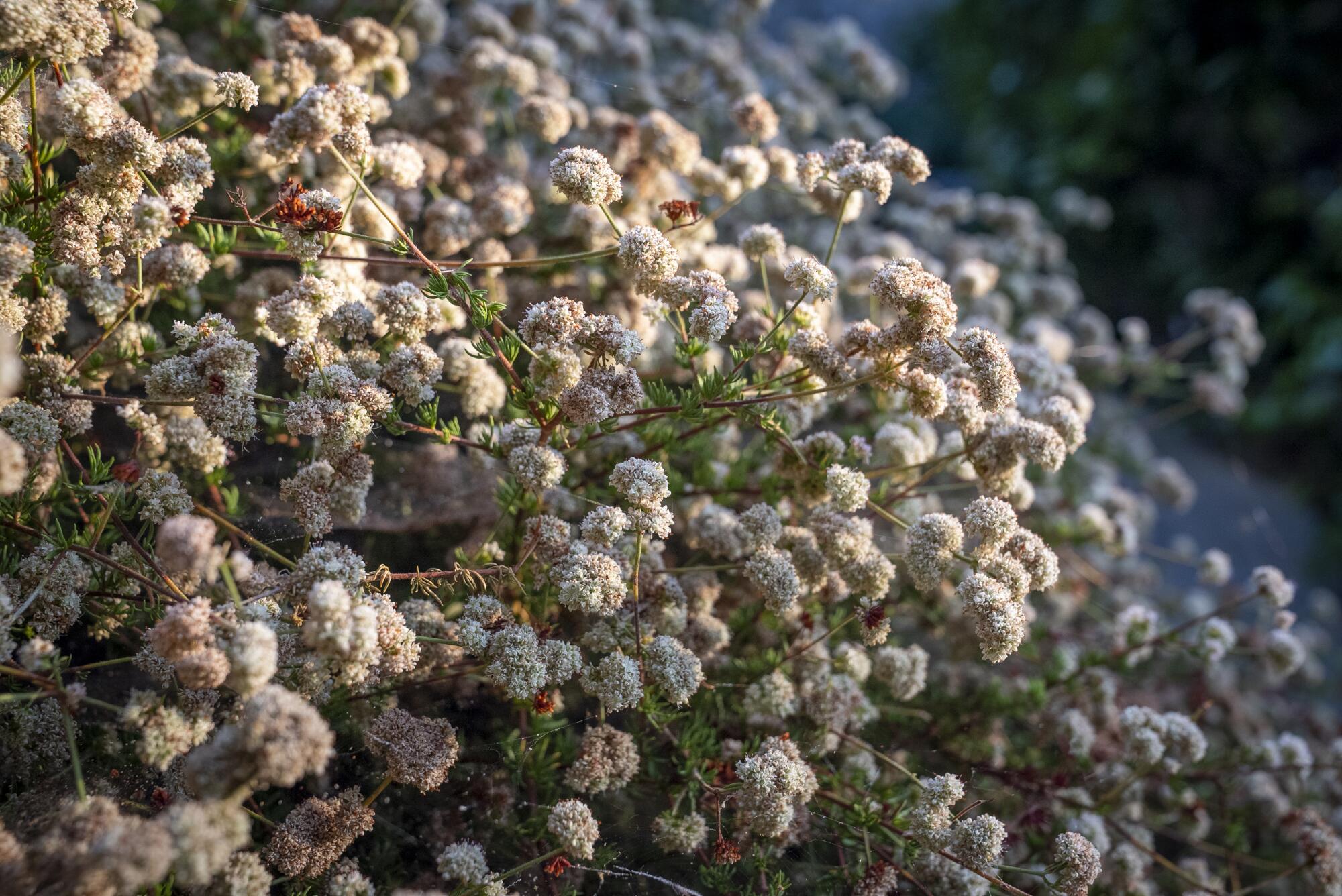
Here’s the plan: Let’s create a campaign to line our yards, our streets and even our airport thoroughfares with the beautiful and fragrant plants that grow natively in this region. And let’s get started in the coming year, so by 2028, when the city is hosting athletes and guests from around the world, the plantings will be mature and thriving.
Otherwise, our international guests might notice that L.A.’s public landscapes are embarrassing, “with horribly topped trees, artificial grass and really drab plants,” said Evan Meyer, executive director of the Theodore Payne Foundation, one of the region’s premier nurseries and education centers for California native plants.
Everything you need to know about the 2024 Paris Summer Olympic Games, including the final medal count and results after two weeks in France.
Forget speed-planting ornamentals for TV closeups. Creating a native plant landscaping campaign around the Olympics is a better way to extol the region’s ecological heritage while giving Los Angeles a badly needed sprucing up, Meyer said.
“The big question is: What story does Los Angeles want to tell about itself?” Meyer said. “Are we going to be an environmental leader and show the world what California has to offer from a botanical perspective? Or are we going to talk about artificial grass?”
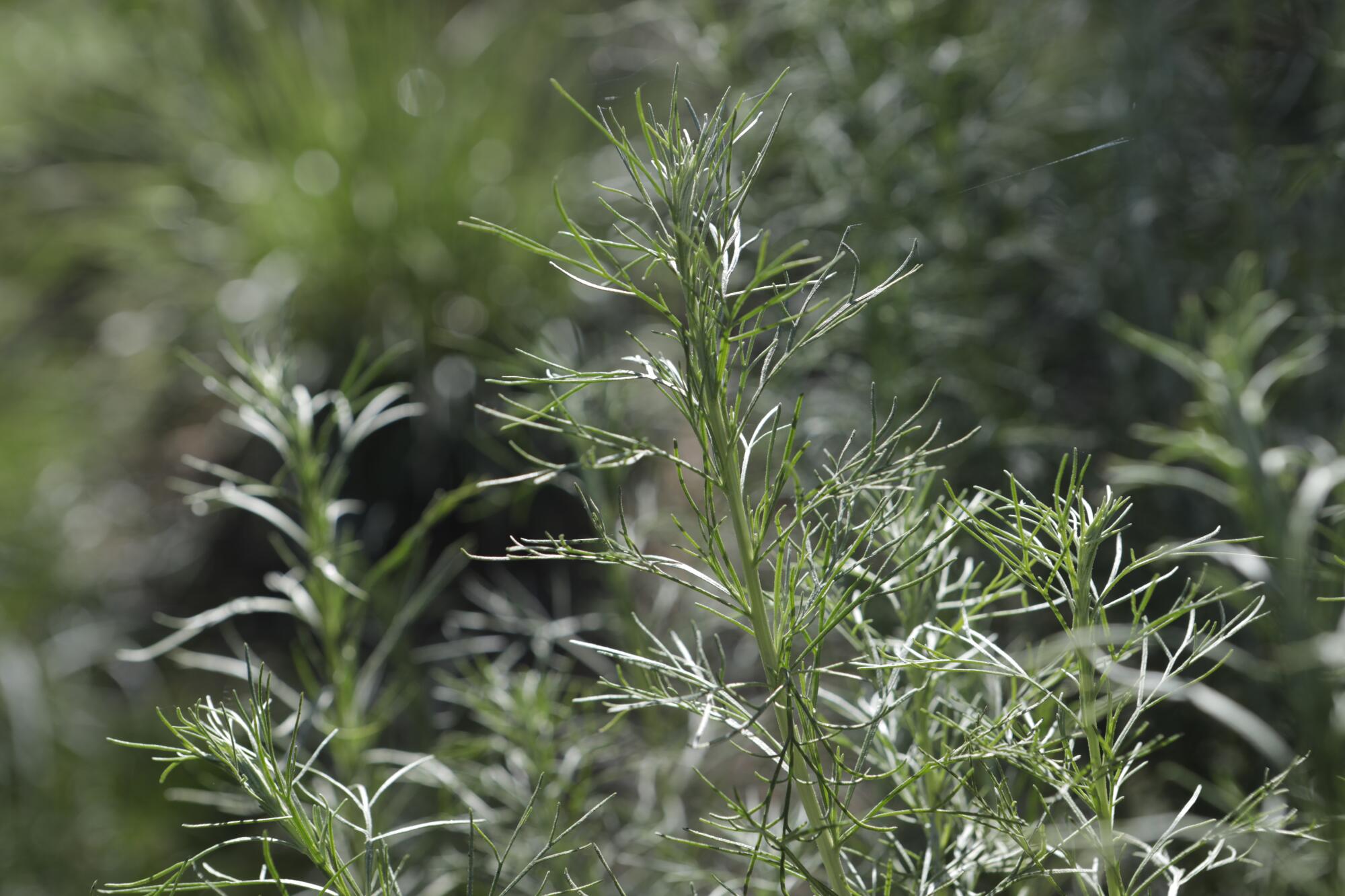
Good thing L.A. is full of all kinds of storytellers — starting with our Indigenous people who can advise us on the historic uses of these plants for food, tools, shelter and medicine, said Bob Ramirez, president of the Gabrielino Tongva Springs Foundation’s Kuruvungna Village Springs in Sawtelle, a natural spring used by Native Americans for thousands of years.
California is one of the world’s top 10 biodiversity hot spots, with plants that grow nowhere else, Ramirez said. And Native people incorporated those plants into their lives for generations. “It‘s important that people understand the history that was here before the Spaniards,” he said. “People go to Europe to see the ruins of early empires, but they don’t know about the ancient history of our region, and native plants can provide a context for that.”
We have plenty of time to get this done. “It’s just a question of planning,” said horticulturist Carol Bornstein, former director of the nature gardens at the Los Angeles County Natural History Museum and co-author of “California Native Plants for the Garden,” one of the region’s most definitive books about native plant landscaping.
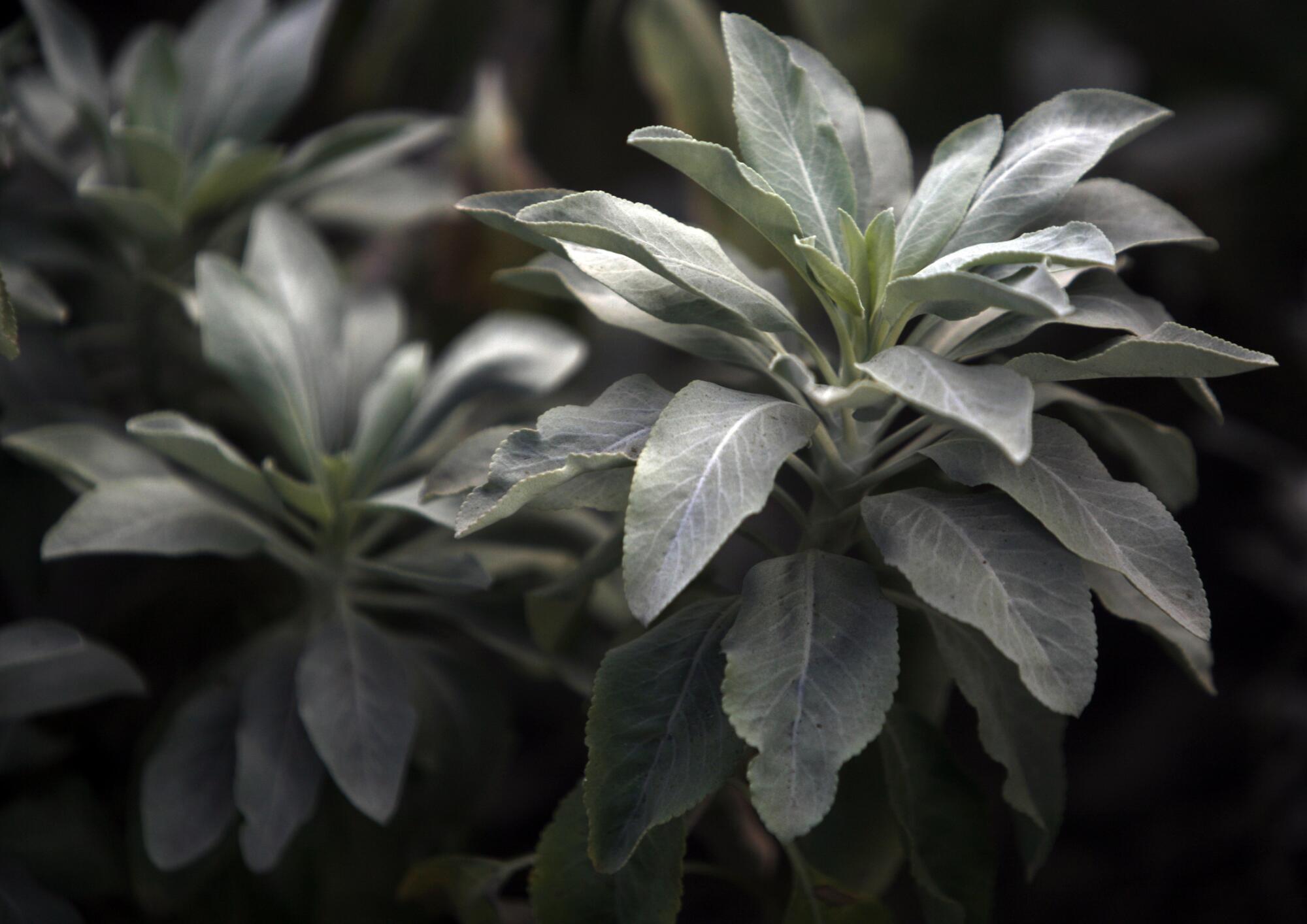
A native plant landscaping campaign isn’t just about beautifying the city for the Olympics. “It’s about reflecting who we are as Southern California,” she said. “It’s a way to puff up our chests, so to speak, to show what we are doing in preserving and enhancing our biodiversity.”
To help tell this story, Bornstein suggests using graceful desert willow trees, which bloom profusely in the summer and are small enough to live in containers, and two perennial natives, Gran Canon Baja bush snapdragon and De La Mina verbena, that bloom almost year-round and do very well in pots.
Los Angeles paid $12,500 to raze a native plant garden in Elysian Park to protect a metal storage shed from fire. Critics ask: Why and what now?
Tim Becker, horticulture director of the Theodore Payne Foundation, said the push for more native plantings could expand L.A.’s identity beyond Hollywood and giant traffic jams. His plant suggestions for a campaign would include using California sagebrush, bush sunflower, California fuchsia and fairyduster.
“The plants are the easy part; they’re beautiful, they attract beneficial pollinators and they create a sense of place,” he said. “The hard part is getting a seat at the table. How do we [native plant advocates] inject ourselves into that decision-making process?”
City officials have supported green initiatives on paper, “but now is the time to get these plants in publicly visible spaces,” he said.
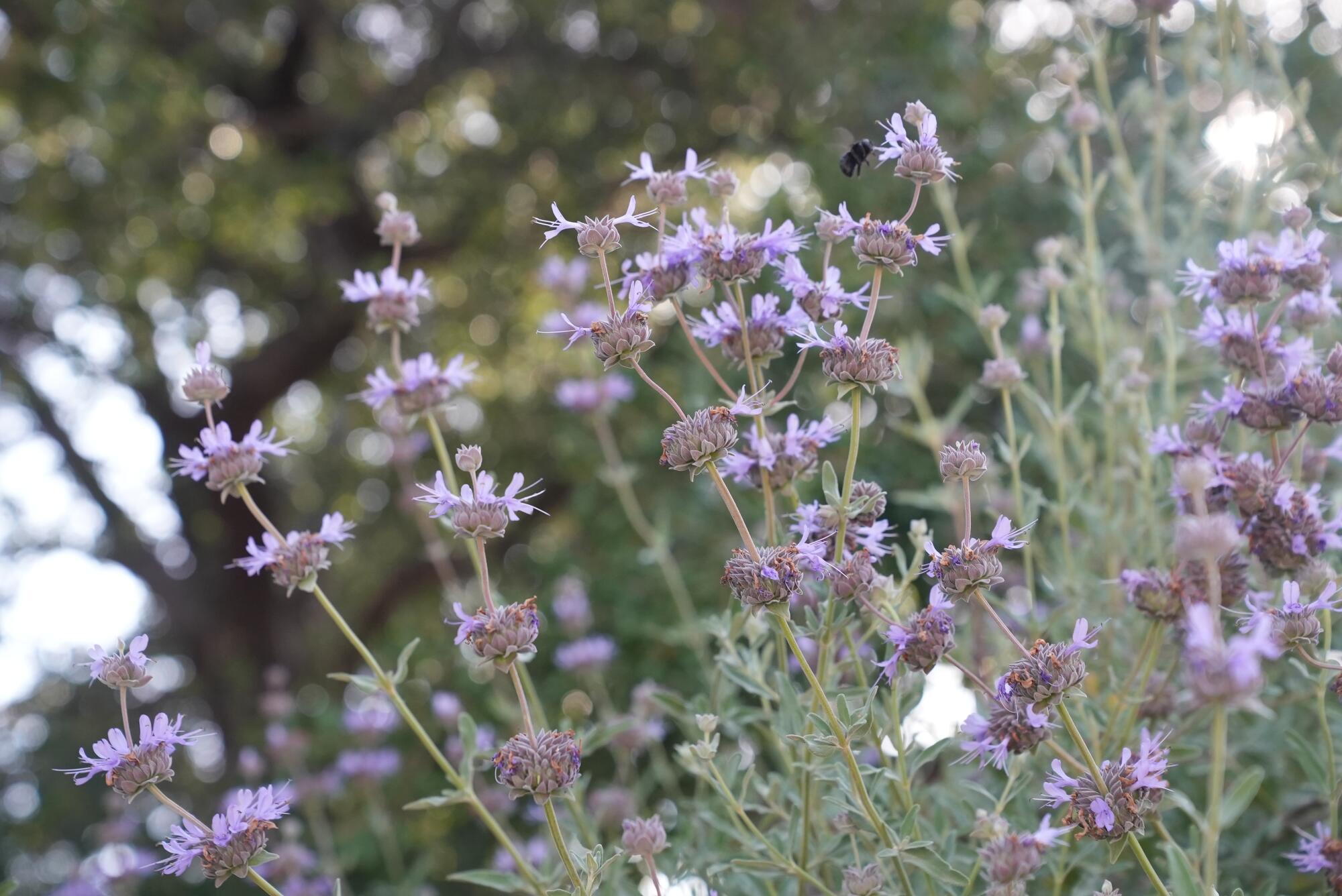
What Angelenos decide now can have a huge effect on the region’s image, now and in the future. Just consider how the beautification work for the 1932 Olympics changed L.A.’s skyline.
Palm trees were already a SoCal gardening craze around the turn of the 20th century, according to the PBS history show “Lost L.A.” But starting in March 1931, the city cemented their future as L.A.’s iconic trees by planting some 40,000 palms along 150 miles of streets, according to the show, in part to prepare for the Olympics but also to provide jobs for 400 unemployed men during the Great Depression.
That Olympics beautification project happened more than 90 years ago, and it’s still reverberating today. Palm trees, which feed into the tourism fantasy that Southern California is a tropical paradise, provide zero shade; their heavy fronds are a dangerous nuisance and keeping them trimmed is a large municipal expense.
Landscapes with native plants, on the other hand, will require less water use and less pollution from gas-powered lawn mowers and offer better support for our threatened birds and insect pollinators.
Casa Apocalyptica is full of salamanders, birds, dragonflies and koi amid native plants and soothing water features.
Tree planting and creating a consistent tree canopy is an overarching suggestion in the city of Los Angeles Public Works Committee’s L.A. 2028 Olympics Legacy Street Improvement Plan, but the document doesn’t list what trees should be included. Why not go with suggestions from native plant experts such as Mike Evans, who started his Tree of Life native plant landscaping company and nursery in San Juan Capistrano nearly 50 years ago?
Evans’ list of native plant suggestions is long, but highlights include using two of the region’s keystone trees — coast live oak and Western sycamores — for shade along with any variety of ceanothus and manzanitas (both of which come in many shapes and sizes).
Angelenos need to understand that diversity — at least 15 to 20 species of plants — is key to creating a natural landscape, especially if they hope to help pollinators and other wildlife. “It’s not enough to just plant a row of ceanothus,” Evans said. “We have a traditional culture of spending time outdoors, and we should celebrate that in our gardens with native plants, because they tell the story of our land.”
No one is suggesting a native plant mandate or advocating that Angelenos rip out existing non-native landscapes (well, except maybe for water-thirsty lawns), but there are so many shade trees that need planting, intersections that need weeding and replanting and businesses that need something besides concrete. Why can’t we set some community goals around using native plants?
Actually, we shouldn’t wait for the city to do all the cleanup work. The city’s Office of Community Beautification offers resources to help community members volunteer for cleanups around their neighborhoods.
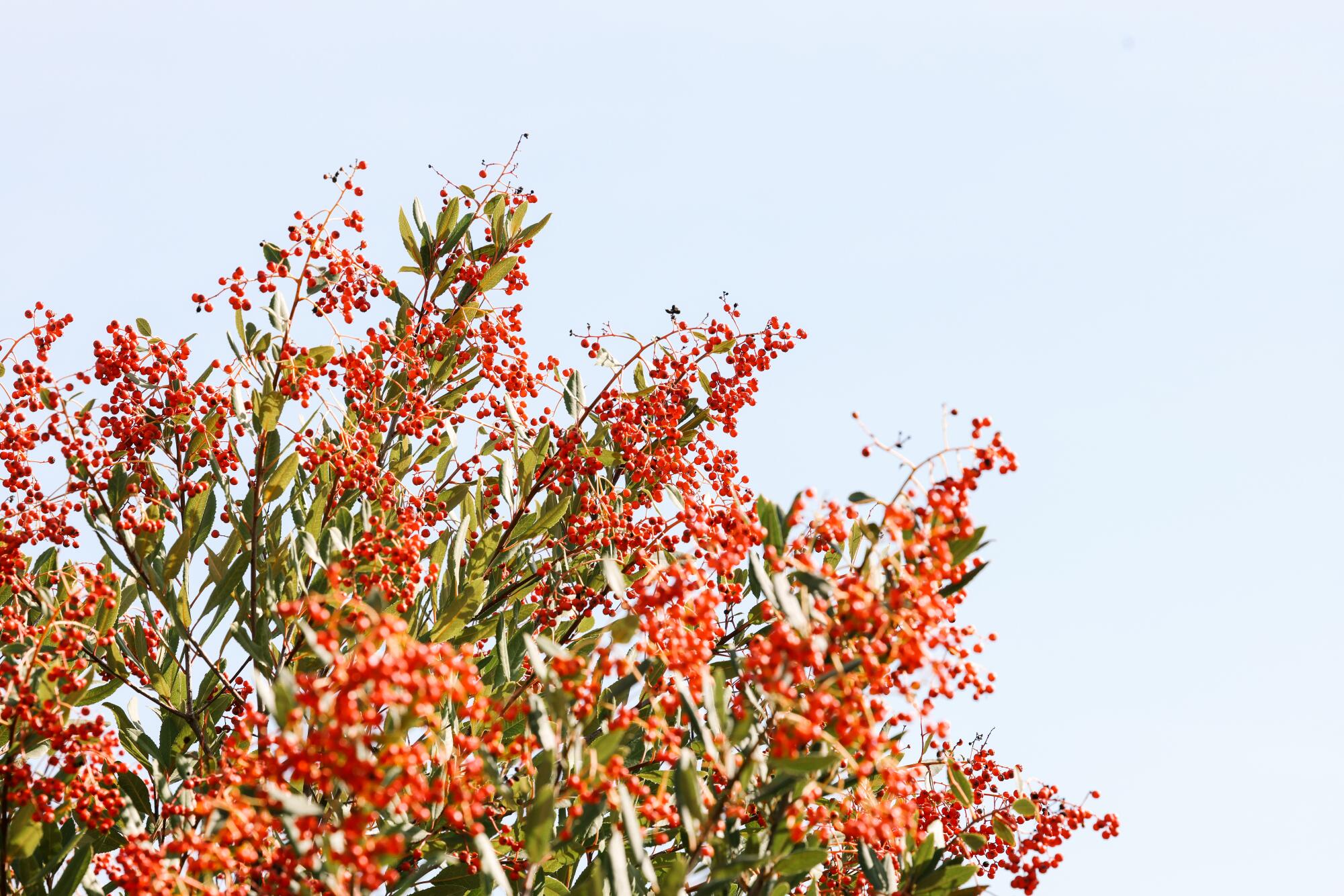
Meyer suggested that Angelenos consider a Victory Garden approach for sprucing up their yards, balconies or business fronts. During World War II, families helped the war effort by planting vegetable gardens in their yards to free up farm-produced food for our soldiers overseas — except in this case, we’d be growing Olympic gardens to help Los Angeles tell its story through native plants.
He also advocates planting native milkweeds like narrow leaf and woollypod, summer bloomers that will attract lots of pollinators, especially the endangered Western monarch butterflies.
Chaz Perea, a horticulture professor at Mount San Antonio College and landscape manager at Dodger Stadium, is transforming the grounds of the stadium with predominantly native plantings. The stadium has nearly 20 round concrete planters four feet tall and four feet in diameter, which can be moved with forklifts, that might work for a citywide native plant campaign, he said.
The stadium’s containers are planted with native toyons. “They’re dark green and easy to grow, and they create a wall of healthy, lush plant material,” Perea said. Plus, they flower in the spring and in the winter provide clusters of decorative red berries beloved by birds.
Jules Dervaes Jr. wanted a simpler life when he turned the yard around his city home into the organic Urban Homestead his children still farm 50 years later.
Perea also likes the idea of growing native Roger’s Red grapes on trellises in large containers to provide summer greenery, fall color when the leaves turn red and gold, and sculptural vines in the winter. He also recommends planting lemonade berry and pink flowering sumac to replace non-native hedges.
“I see plants as unifiers,” said Brandy Williams of Garden Butterfly in Vermont Knolls. She weaves native plants, Mediterranean climate plants, succulents, vegetables and herbs into her landscape designs. One way to honor the athletes, she said, would be to create plantings from the five different Mediterranean climates, recognizing the countries from each region.
California native plants would still be featured prominently, she said, to support local pollinators. Her recommendations include multiple buckwheats, including California buckwheat, and Yankee Point ceanothus, an evergreen groundcover that has beautiful spring flowers. After it blooms, the plant’s dark green branches still look lovely in the ground or spilling out of a pot.
Plants can bring us all together, said Williams, “and featuring California native plants is just another unique way to showcase unity. When people come to our gardens, they can better understand our culture.”
More to Read
Sign up for The Wild
We’ll help you find the best places to hike, bike and run, as well as the perfect silent spots for meditation and yoga.
You may occasionally receive promotional content from the Los Angeles Times.
